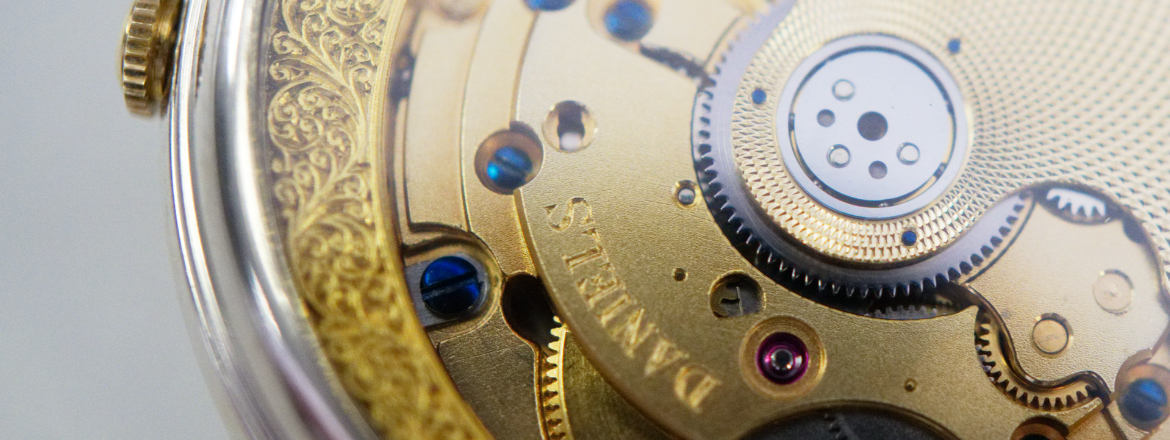Collector’s Guides • 20 Aug 2018
Modern Artisans of Time Part 1: The English Pioneers
Watch enthusiasts often talk about independent watch brands. Of these, there exists a subcategory of those who might be considered artisanal watchmakers. The Hour Glass explores this arena of watchmaking in a three-part series, beginning with The English Pioneers. In this trilogy of articles, Firmin Li and Ida Lee talk about the world of artisanal watchmaking, and how it has developed over the past 60 years.
Mention the word “watchmaking” and the image conjured is usually of a person in a workshop, surrounded by various machines, at a bench furnished with antique tools, working on some fine and highly complicated mechanism with their hands. According to Rees’s Cyclopaedia (1819), 34 different trades are required to make a watch. For years, watchmakers specialised in one, at most several, of these trades; in Switzerland, particularly those employed by the larger manufactures, individual watchmakers were often responsible for one particular step, such as dial-making, spring-making, or wheel cutting for the entirety of their careers.
Up to the 20th Century watches were often reserved for aristocracy, specialists, or members of the military. World War II saw significant advances being made in circuitry, with ever increasing attention on precision time-keeping using non-mechanical methods. By then, the world was already introduced to quartz clocks; in fact, the US National Bureau of Standards based the standard time of the US on quartz clocks between 1930s and 1960s, until it was replaced by the atomic clock. At the time, it was widely believed that, while accurate, the quartz clock technology would not ever be affordable enough to be used domestically. Even when Seiko launched their Quartz Astron in late 1969, many believed it would be a short-lived novelty. Coupled with the advances in semiconductor technology, the digital clocks and watches that soon followed proved the initial prediction false. The Asian companies who embraced these new quartz movements saw production of their watches and clocks soar, while the Swiss traditional watchmaking industry became decimated over the course of the next two decades.

Yet, it was also around this time, in 1968, that a single watchmaker would successfully make an entire watch by himself: George Daniels. The renowned English watchmaker is best remembered for his design and development of the co-axial movement, considered by many as one of the most significant horological developments in the 20th Century. But Daniels’ greatest achievement really should be his being the first person in history to master 32 of the 34 traditional watchmaking skills, making all the components of his Daniels watches by hand and from scratch. His natural inclination for mechanics is perhaps best summed up in his ability to “look at a mechanism and understand instantly how it works and proceed to do the work without preliminary drawings or sketches.” (Clerizo, 2013)

Daniels saw the quartz development as a challenge and wanted to prove that it was possible to make a mechanical watch that was more accurate than a quartz watch. One of his first pieces, the Clutton II, was less than one second slow after travelling halfway across the world over 32 days, which meant the watch would have seen high degrees of temperature and positional variation. This same piece would later be observatory tested, and measured to have a mean difference of 0.2 seconds per day. It proved that, with care, it was possible to create a highly accurate mechanical watch; however, it would also require the acute skills of talented and experienced watchmakers for it to happen.

Daniels’ watchmaking experience began in restoration. Most independent watchmakers today share a similar background; the restoration of historically important pieces form their foundation for understanding what works (and what doesn’t) in a watch. Restoration also required a watchmaker to understand and put themselves in the shoes of the original maker. An example of this level of understanding and research in Daniels’ case was his close study of Abraham Louis Breguet. His experience in restoring various Breguet timepieces culminated in his publication of his book on the subject, ‘The Art of Breguet’ in 1975. Daniels was so widely considered by his contemporaries as the foremost expert on Breguet, he was offered to buy the brand in the late 60s. Instead, he declined the offer, preferring to make watches with his own name on it.
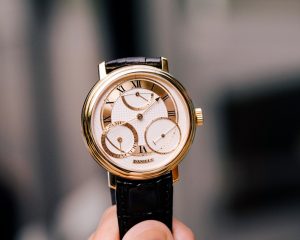
His unconventional foray into the trade – Daniels had repaired watches and clocks from the age of 14 – meant he took a very different approach to watchmaking. Unlike his Swiss contemporaries, Daniels preferred a more practical methodology, rather than their theory-based approach. It was upon this foundation he laid the groundwork for designing and developing the co-axial escapement. Invented in 1974 and patented in 1980, the Daniels co-axial escapement was the result of his constant practical development and use of different escapements in his own pocket watch creations.
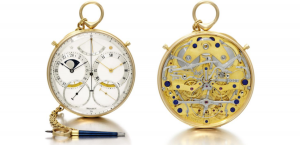
In conventional lever escapements, the effects of lubricants on the escapement parts impacted on the long-term accuracy of the movement. And although detent escapements were better long-term performers, these weren’t appropriate for wristwatches. The co-axial escapement draws on elements from the detent escapement and Breguet’s Eschappement Naturel (Natural Escapement), creating a new escapement that makes lubrication of the pallets theoretically unnecessary (in practice, lubrication is used, but to minimise impact corrosion over time). While recognised at the time as the most significant advancement in watchmaking design in 250 years, it would be another 19 years of discussion with a multitude of Swiss brands (and a divorce) before the co-axial movement would be successfully commercialised by Omega. Today, almost all mechanical Omega watches are powered by a co-axial movement.
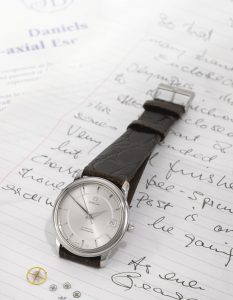
A name not often mentioned, but crucial to the development and subsequent commercialisation of the co-axial, is Derek Pratt. A good friend of Daniels and a resident of Switzerland, Pratt was, perhaps, the opposite of his friend in his preference to work behind the scenes, and known in watchmaking circles for his excellent craftsmanship and elegant movement design. His work very much reflects his character: when he passed away in 2009, he left behind many incomplete projects, including a catalogue of watches and movements for Urban Jurgensen, a missing watch utilising Tensator Springs, a remontoire wristwatch developed in collaboration with Stewart Lesemann, and perhaps most notable of all, a recreation of John Harrison’s H4 Marine Chronometre, the device Harrison proposed as the solution to the Longitude problem in 1772.

Pratt was obsessively perfectionist with the H4 project to the very last details – he wanted to find the right dial maker and engraver to complete the watch. The H4 recreation was later finished by the team at Charles Frodsham (who are making a wristwatch featuring an interpretation of Eschappement Naturel of their own), and has been shown in various museums around the world. In a memorial by Timothy Treffry, Pratt was “actively involved with George in his efforts to get the Swiss industry to adopt the co-axial escapement and became an important intermediary when Omega was adapting it for mass production. Derek produced the escape pinion for the ‘slimline’ version of the escapement…It saddened Derek that George could never bring himself to acknowledge these contributions”.
But perhaps more important than both the co-axial escapement, and ‘The Art of Breguet’ was Daniels’ publication of ‘Watchmaking’ in 1980. A result of years of practical experience, Daniels set out to write what essentially was an instruction manual on how to make a watch from scratch. So detailed is ‘Watchmaking’, that there are sections dedicated to every step of the process, from how to select a good workbench, different drawing methods, crucial formulae for the production of parts, with the book ending in “Lastly, fit the movement, together with dial and hands, into the case and the watch is now ready for final rating”. Throughout the entire book, Daniels explains the processes a watchmaker undertakes, problems that they might encounter, and practical solutions to those problems. ‘Watchmaking’ basically consolidated centuries of watchmaking know-how in one practical manual, making it possible, for the first time, for anyone brave enough, to create their own watch by following its complete and comprehensive set of instructions.
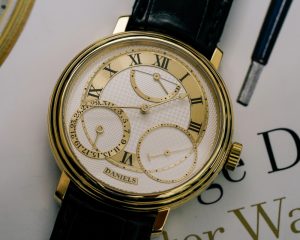
Published in the midst of the Quartz Crisis, ‘Watchmaking’ offered a guiding light to the watchmakers in a dwindling industry. It presented an alternative path to budding young watchmakers who were dissatisfied and disheartened at the thought of working as one processor in an assembly line, and proposed the possibility of making a mark in the watch industry by creating their own watches, from design to completion. And certainly, without pioneers like Daniels and Pratt, the uneasy path of independent and artisanal watchmaking would be a lot more difficult; and perhaps, without their contribution, that image of a watchmaker at their bench may well have become a relic of the past.
In the second part of the trilogy, we explore the response of artisans to the Quartz Crisis, the remarkable bonds and links between individual artisans, and the shifting aspirations of that generation of independent watchmakers. Part 2 found here.
References:
Michael Clerizo, 2013, “George Daniels: A Master Watchmaker & His Art”, Thames & Hudson, United Kingdom.
Timothy Treffry (editor), 2012, “Derek Pratt FBHI, Watchmaker 1938 – 2009”, British Horological Institute, United Kingdom.



